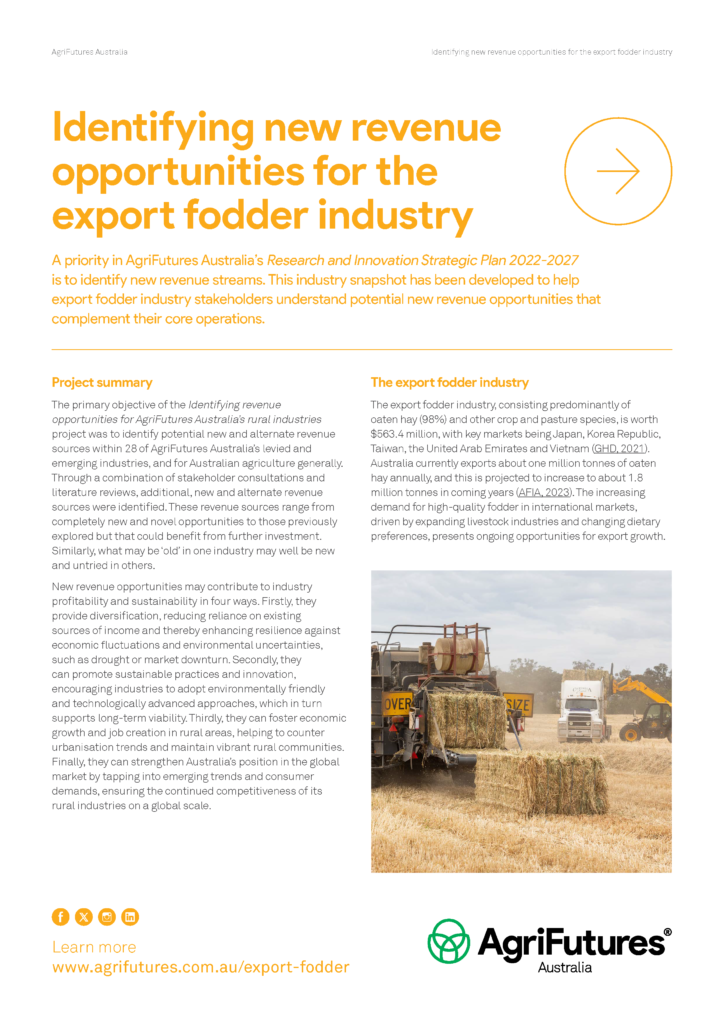The primary objective of the Identifying revenue opportunities for AgriFutures Australia’s rural industries project was to identify potential new and alternate revenue sources within 28 of AgriFutures Australia’s levied and emerging industries, and for Australian agriculture generally. Through a combination of stakeholder consultations and literature reviews, additional, new and alternate revenue sources were identified. These revenue sources range from completely new and novel opportunities to those previously explored but that could benefit from further investment. Similarly, what may be ‘old’ in one industry may well be new and untried in others.
New revenue opportunities may contribute to industry profitability and sustainability in four ways. Firstly, they provide diversification, reducing reliance on existing sources of income and thereby enhancing resilience against economic fluctuations and environmental uncertainties, such as drought or market downturn. Secondly, they can promote sustainable practices and innovation, encouraging industries to adopt environmentally friendly and technologically advanced approaches, which in turn supports long-term viability. Thirdly, they can foster economic growth and job creation in rural areas, helping to counter urbanisation trends and maintain vibrant rural communities. Finally, they can strengthen Australia’s position in the global market by tapping into emerging trends and consumer demands, ensuring the continued competitiveness of its rural industries on a global scale.
Industry-specific challenges
Specific insights relating to the Australian export fodder industry include:
1. Elevated prices for other crops, such as canola, has prompted some growers to shift their focus away from oaten hay.
2. Global market competition and Australia’s distance from key markets create supply chain intricacies and mean logistics costs are higher.
3. Resource cost and scarcity is squeezing profit margins for both farmers and exporters.
Industry-specific opportunities
Specific opportunities relating to the Australian export fodder industry include:
1. Agtech – embracing precision agriculture and utilising drones, satellite imagery, IoT-enabled sensors and water measurement probes uniformly throughout the industry to enhance Australia’s industry standards and bolster its competitiveness on the global stage.
2. Enhancing traceability through the adoption of blockchain across the industry to manage market access by meeting consumer ethics, health and provenance expectations.
3. Exploring soil carbon methodologies and reviewing industry practices to identify potential opportunities to participate in environmental markets through adjusting management activities. Additionally, exploring potential opportunities for producers to quantify the reduction in their emissions.





